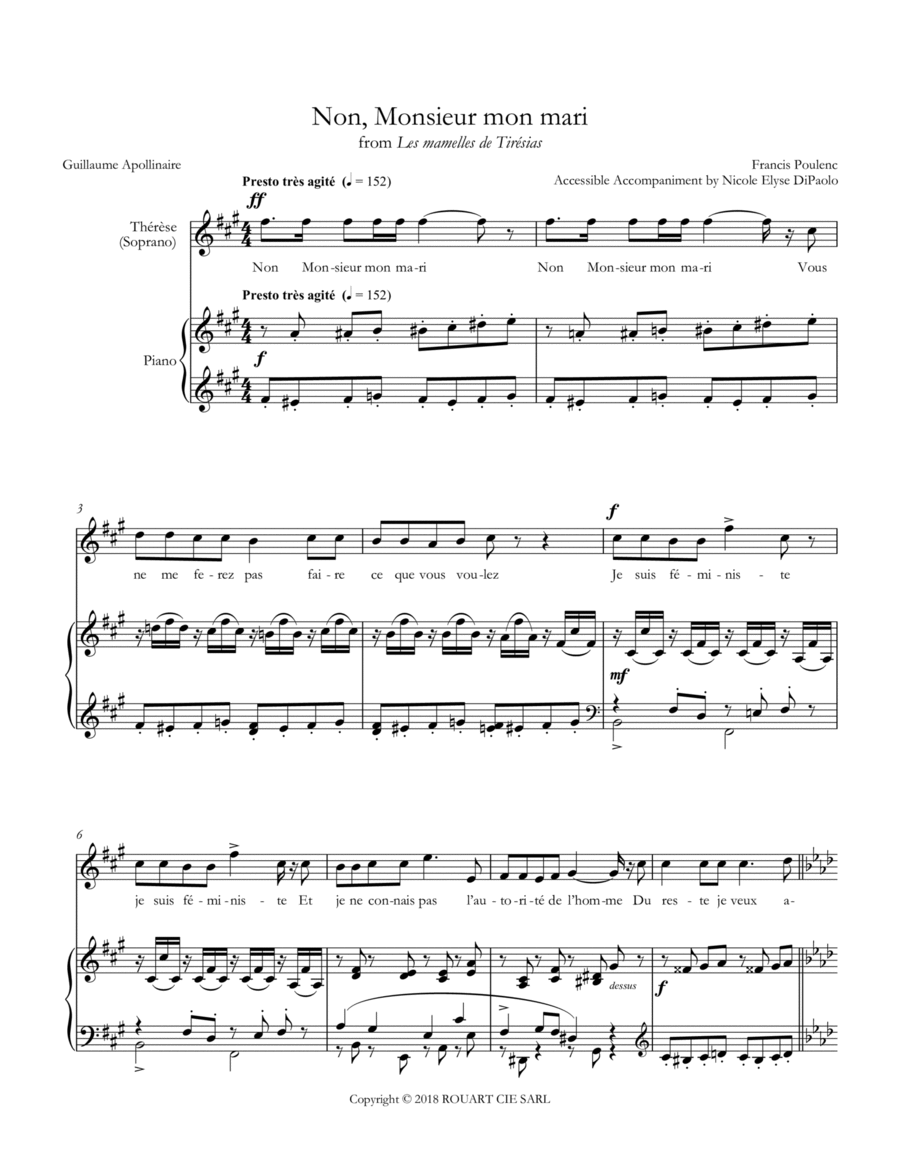Piano,Vocal,Voice - Level 5 - Digital Download SKU: A0.1315461 Composed by Francis Poulenc and Guillaume Apollinaire. Arranged by Nicole Elyse DiPaolo. 20th Century,Classical. Score. 11 pages. Nicole Elyse DiPaolo #904195. Published by Nicole Elyse DiPaolo (A0.1315461). The first of its kind, this is a genuinely playable piano/vocal reduction of Non Monsieur mon mari from Poulenc and Apollinaire's Les mamelles de Tiresias. Sopranos who love this aria no longer need to fear bringing it in for auditions, last-minute performing engagements, or other situations in which the pianist may have to sight-read from the chaotic, poorly notated, and technically demanding vocal score devoid of needed key signatures. Pianists may now enjoy playing this aria comfortably, without risking strain/injury by trying to play reams of excessive 16ths spread out in ways designed for Poulenc's obviously large hands. A few enharmonic respellings in this edition will also provide greater musical understanding for both singers and pianists. This collectionâ??s reductions boast several unique features: 1. No reduction ever requires stretches of over an octave, not including bass notes meant to be held or â??fudgedâ? with the pedal (though octaves may also contain chord tones within them). This reduces the amount of rearranging that smaller-handed pianists must already do. Obviously, further reworkings are to be expected and pianists should feel free to add to or modify what Iâ??ve provided.2. Iâ??ve included less essential, but potentially desirable additional voices/passages in cue-size noteheads so that pianists can easily see them, but know that they are not necessary in a â??sink or swimâ? accompanying situation. Presenting less essential material in cue-size noteheads also reduces visual clutter on the page.3. In addition to the composerâ??s markings, when needed, I have included hints on particular notes to bring out when the singer is likely to need them as a pitch anchor or when it is not obvious which line should be brought out within the texture.4. All page turns have been carefully selected, when possible, so as to result in the least possible disruption to the pianist. When an inevitable page turn precedes a potentially surprising note or chord, Iâ??ve included the next downbeatâ??s notes in cue-size stemless noteheads at the end of the preceding measure.5. I have preserved beams in 8th and smaller note values within the vocal parts so that pianists, some of whom might not be accustomed to syllabic beaming conventions, will find it easier to follow the singerâ??s rhythms while reading potentially unfamiliar arias.6. When known, Iâ??ve noted alternate cuts that singers might like to take within certain arias.7. In some cases Iâ??ve modernized spelling conventions for easier readability (for example, by replacing â??Ã?â? with â??ssâ? in German arias) and enharmonically respelled brief passages or added key signatures for greater clarity.
